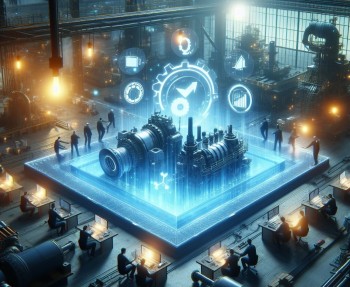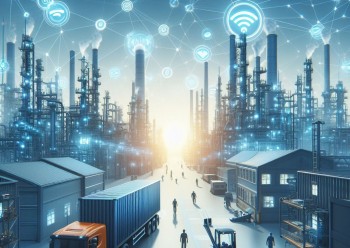| The National Institute of Standards and Technology (NIST) defines Smart Manufacturing as systems that are “fully-integrated, collaborative manufacturing systems that respond in real time to meet changing demands and conditions in the factory, in the supply network, and in customer needs.” | The SMLC definition states, “Smart Manufacturing is the ability to solve existing and future problems via an open infrastructure that allows solutions to be implemented at the speed of business while creating advantaged value.” |
AUTOMATION has always been a part of the factory to some degree, and even high levels of automation are nothing new. However, the term “automation” suggests the performance of a single, discrete task or process. Historically, situations in which machines have made “decisions” have been automation based and linear, such as opening a valve or turning a pump on and off based on a defined set of rules. Through the application of artificial intelligence (AI) and increasing sophistication of cyberphysical systems that can combine physical machines and business processes, automation increasingly includes complex optimization decisions that humans typically make.
Finally—and perhaps most crucially—the term “smart factory” also suggests an integration of shop floor decisions and insights with the rest of the supply chain and broader enterprise through an interconnected IT/OT landscape. This can fundamentally change production processes and enhance relationships with suppliers and customers.
Through this description, it becomes clear that smart factories go beyond simple automation. The smart factory is a flexible system that can self-optimize performance across a broader network, self-adapt to and learn from new conditions in real or near-real time, and autonomously run entire production processes.
Smart factories can operate within the four walls of the factory, but they can also connect to a global network of similar production systems, and even to the digital supply network more broadly.
The true power of the smart factory lies in its ability to evolve and grow along with the changing needs of the organization—whether they be shifting customer demand, expansion into new markets, development of new products or services, more predictive and responsive approaches to operations and maintenance, incorporation of new processes or technologies, or near-real-time changes to production. Because of more powerful computing and analytical capabilities—along with broader ecosystems of smart, connected assets—smart factories can enable organizations to adapt to changes in ways that would have been difficult, if not impossible, to do so before.
Smart manufacturing and the Smart Factory is a broad category of manufacturing with the goal of optimizing the manufacturing process. Smart manufacturing is the process that employs computer controls, modeling, big data and other automation to improve manufacturing efficiencies.
With aim to take advantage of advanced information and manufacturing technologies to enable flexibility in physical processes to address a dynamic and global market Smart Manufacturing is being predicted as the next Industrial Revolution or Industry 4.0. And, as with many other advances throughout recent years, it all has to do with technology connectivity and the advances in the contextualization of data.














